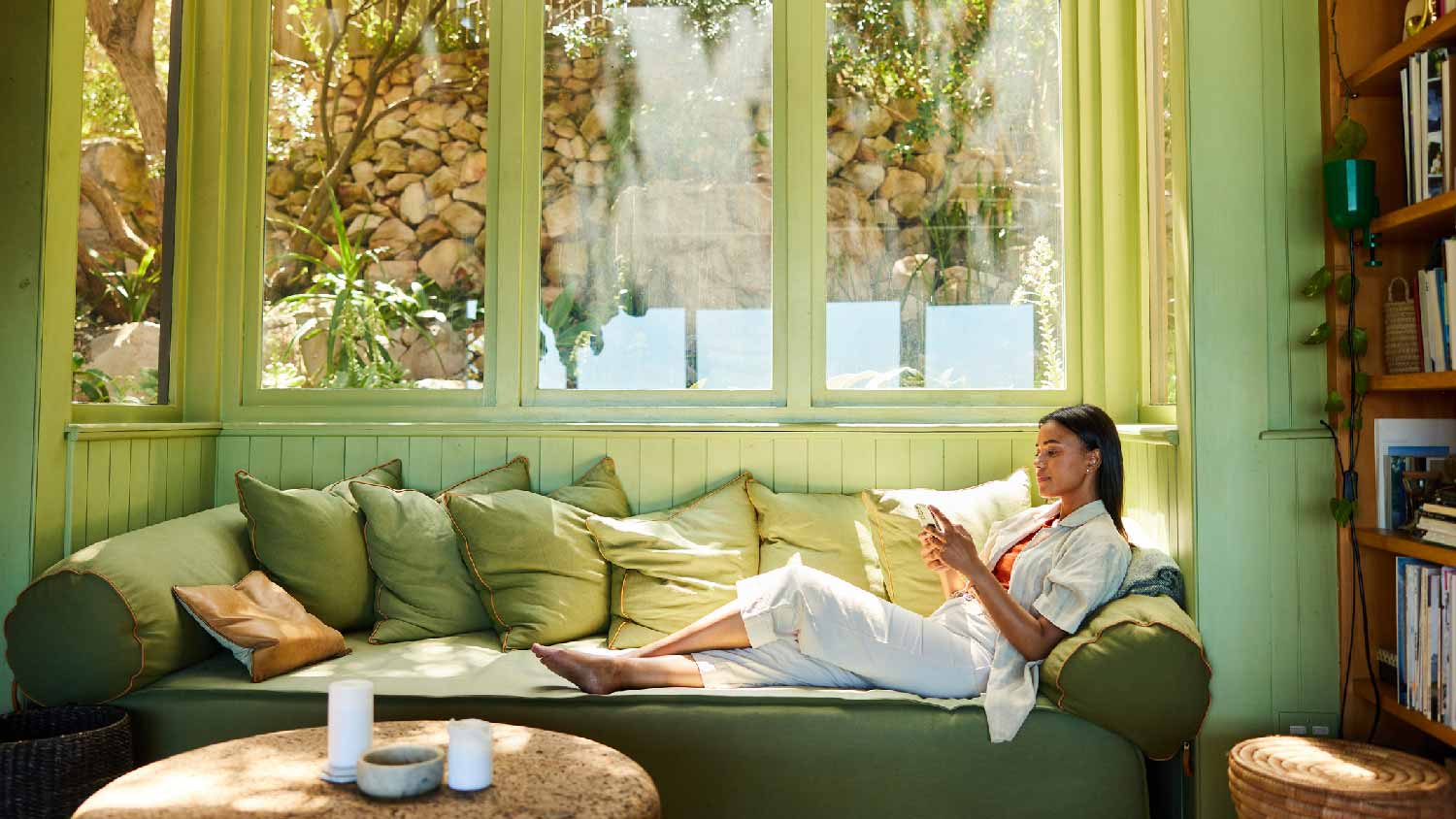Why Is My House So Dry? 4 Causes and Solutions
Make your home more comfortable with our expert tips


Forced-air heat can create dry indoor air.
Dry indoor air can cause skin irritation, static electricity, and other unpleasant conditions.
A whole-house humidifier can help; installing one costs an average of $392 to $765.
If your skin is tight and itchy and your clothes are full of static, you may be wondering, why is my house so dry? Heating, cooling, and the weather can all cause the humidity levels in your home to plummet. Here are four common causes of dry indoor air and how to fix the situation.
1. Heating
During winter months, many homeowners rely on forced air heating to keep their homes comfortable. However, forced-air heat systems are notorious for creating dry indoor air. The problem can get worse as the outdoor temperature drops and the heating system works harder to generate even more warm, dry air.
How to Fix It
Several types of forced-air furnace-mounted humidifiers exist for the very reason that the systems create dry air as a primary product. Numerous portable humidifiers are also available for single-room applications. There are also several ways to increase indoor humidity levels without a humidifier, such as employing plants or a water fountain.
2. Cooling

During warm months, we rely on our air conditioners to let us escape the outdoor heat. Air conditioning works by decreasing moisture in the air during the heat removal process, so it can generate dry indoor air.
How to Fix It
If you have central air conditioning in your home, you can use the same humidifier your furnace uses during the winter heating months. You can also use portable humidifiers if the problem doesn't require constant attention.
3. Poor Insulation
Regardless of the season, poor or inadequate insulation and air leaks can cause spotty or large-scale dryness in the home.
How to Fix It
The best way to combat dry air in the home caused by air leaks or poor insulation is to hire a local energy-efficiency professional, schedule a home energy audit, and follow the recommended steps afterward. Doing so will not only increase the comfort level inside your home but can save you money on energy bills as well.
4. Weather

There's nothing we can do about the weather, yet it's another factor when it comes to maintaining your home's indoor air quality. Warm summer air can require the use of moisture-reducing air conditioning, while cold winter air, which holds less moisture, can dry out indoor air even when your furnace isn't working overtime.
How to Fix It
The best way to increase the humidity in your home is by using a whole home humidifier when it makes sense to do so. The average cost for the device and installation is between $392 and $765.
When to Call a Pro
If the air inside your home is frequently dry and you’re struggling to make things more comfortable, there may be an underlying issue with your HVAC system or humidity devices. Contacting a nearby HVAC repair specialist will help you get to the root of the problem.
How to Prevent a Dry House
The best way to prevent a dry house is having proper ventilation, adequate insulation, and a humidifier to increase the humidity level, if necessary. Ideal humidity levels in your home are between 30% and 50%. It helps to invest in an indoor humidity monitor for between $15 and $25 on average.
Frequently Asked Questions
Having a dry house can be unhealthy for you and the home. Excessive dryness can lead to respiratory issues, dry skin, dry or sore throats, and other problems. Additionally, any wooden furniture and the home's structure and floors can suffer from cracking and shrinking under dry indoor air conditions, leading to gaps and splits.
No, air purifiers neither cause dry air nor increase the home's humidity levels. They remove allergens and dust but don't alter the water content in indoor air. However, because some air purifiers move large volumes of air, the areas immediately surrounding a portable unit can feel cooler and dryer than the rest of the home.





- Furnace Repair
- Air Conditioning Repair
- HVAC Repairs
- Furnace Installation
- Wood & Pellet Stove Repair
- Dehumidifier & Humidifier Repair
- Heat Pump Companies
- Swamp Cooler Repair
- Wood Stove Services
- HVAC Companies
- Commercial A/C Repair
- Geothermal Installation
- Air Conditioning Installation
- Boiler Repair
- 24 Hour Furnace Repair
- Geothermal Repair
- Heat Pump Repair
- Humidifier Installation
- Thermostat Repair
- Thermostat Installation
- Nest Installation
- Heating & Cooling
- Heating Repair
- Furnace Cleaning
- Furnace Tune-Up
- HVAC Technicians
- Subcontractors
- Furnace Maintenance
- Plumbing & Heating Companies
- Wood Stove Inspection
- Mini Split Installation
- Wall Heater Repair
- Duct Installers










